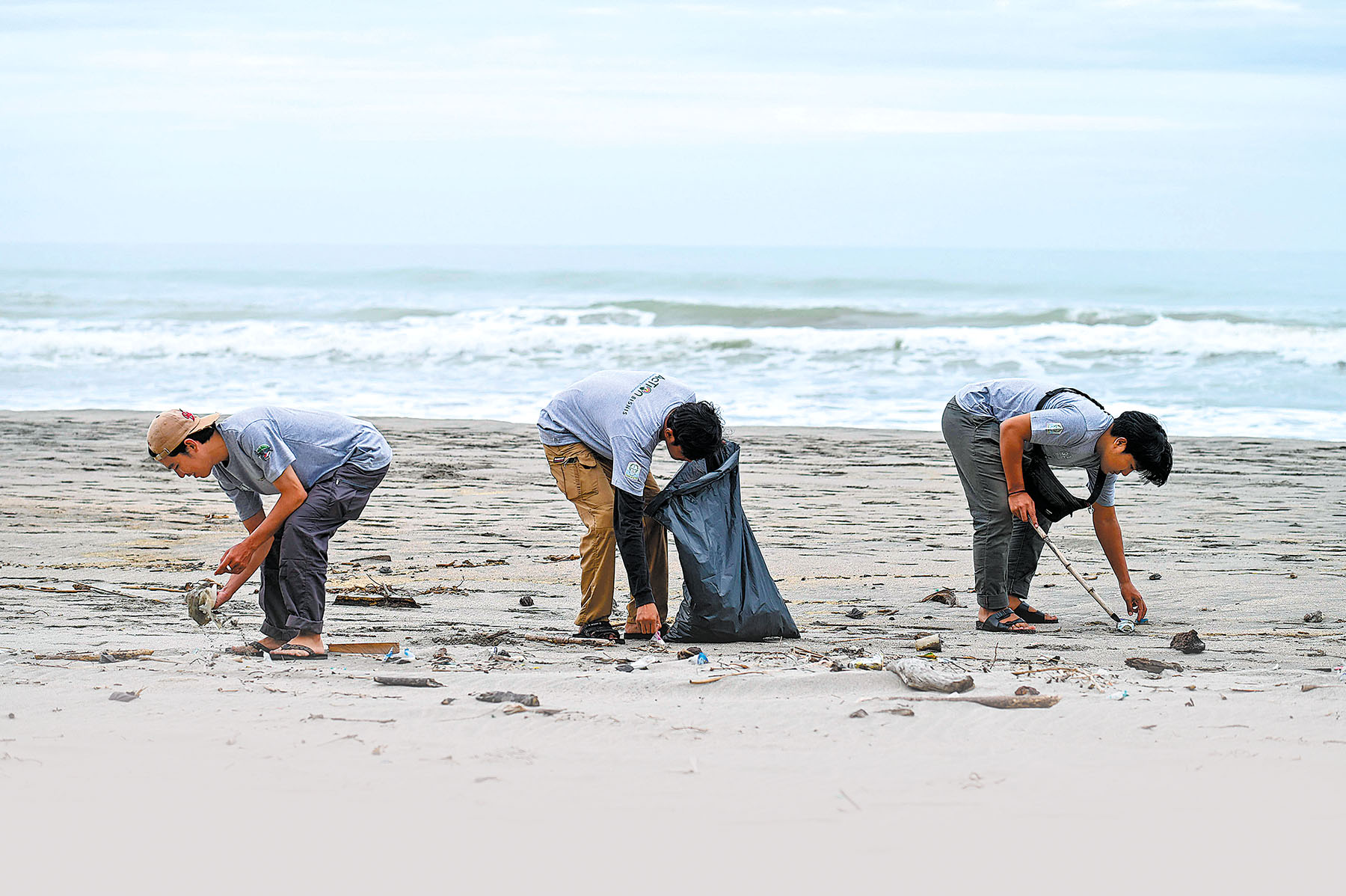Growing risk of microplastics threatens Indonesia's coastal communities

Editor's note: In this weekly feature China Daily gives voice to Asia and its people. The stories presented come mainly from the Asia News Network (ANN), of which China Daily is among its 20 leading titles.
As a major plastic polluter, Indonesia has topped the global per capita intake of microplastics that are found mostly in seafood, with fishermen and coastal communities being the most affected, according to latest studies.
However, the communities know very little about the potential health risks haunting them and continue to consume fish as part of their daily diet, prompting experts to urge immediate action from the relevant authorities to minimize the impact, including imposing stricter regulations on single-use plastics.
Microplastics, often invisible to the naked eye, can be particles smaller than five millimeters and usually come from larger plastic pieces that have degraded over time.
READ MORE: Indonesia village grapples with piles of trash brought in by tides
As these plastic fragments can end up in ecosystems if not managed properly, microplastics can either be ingested or inhaled by humans.
In recent years, many scientists have discovered microplastics in the human body, including in the lungs, breast milk, placental tissue and bloodstream.
While research on long-term impacts is yet to be conclusive, some recent studies suggested that people who have microplastics identified in their bodies are more likely to experience heart attack, stroke and death from any cause.

A recent study conducted by researchers from Cornell University in New York noted that Indonesia has topped the global per capita intake of microplastics from 109 countries mapped.
The study, which was published in April in the Environmental Science & Technology journal, found that Indonesians consume 15 grams of microplastics monthly, a 59-fold increase from 1990 to 2018.
More than half of the microplastics consumed reportedly came from aquatic sources like seafood.
The research further suggested that rapid industrialization has prompted higher plastic demand, resulting in more waste being dumped into waterways and ending up in oceans.
Another study published in February by researchers from Mexico revealed that the intake of microplastics through seafood consumption might disproportionately affect the health of fishermen and coastal communities as they rely heavily on fish as their main source of protein.
Despite this concern, many Indonesian fishermen are still unaware of the danger of consuming microplastics.
Fishery products remain the most accessible and arguably most affordable protein source for them.
Among them is 63-year-old Danu Waluyo, a fisherman in Cilincing, North Jakarta, who always eats fish from his daily catch.
"Although as a fisherman, I catch fish every day, I never get bored of eating it," he told The Jakarta Post.
Suwandi, 37, another fisherman in Cilincing, also said he normally consumed fish four times a week.
"My family eats fish often because it provides great protein, especially for my children," Suwandi said, adding that they usually consumed seafood with lower selling prices that were not targeted for sale like swordfish and rabbitfish.
While Danu and Suwandi admitted that they often found single-use plastic caught in their nets and traps, both said that they were not really concerned about it.
"Maybe if the fish is distressed, they will eat anything, including plastic. But, if it gets into their stomach and we eventually consume, that's something I never realized," Suwandi said.

Stricter regulations
Rafika Aprilianti, a researcher of the Ecological Observation and Wetlands Conservation group, told the Post that according to her organization's research on fisheries across many islands in Indonesia, microplastics were found in seafood products such as fish, crabs and shrimp.
"It is indeed true that river and seawater in Indonesia is dirty …since waste is still often thrown into the river or burned. Meanwhile, the amount of waste recycled is still very little, only about 9 percent," she said.
Various studies have shown Indonesia to be a major polluter of marine plastic debris. Of the 3.9 million metric tons of plastic waste generated annually, 1.29 tons end up in the ocean.
Rafika called on the government to set quality standards for the amounts of microplastics that are allowed in water bodies, as well as encourage more regions to ban the use of single-use plastic.
"Although we already have regulations banning single-use plastic, so far the implementation has only targeted supermarkets and mini-markets, while traditional markets have not been taken into account."
ALSO READ: Island dreams
Aside from tightening regulations surrounding plastic use, Cornell University researchers also urged developing countries to build more robust waste recycling systems by adopting technologies from developed countries to process the discarded plastic.
Neighboring Singapore, meanwhile, has long taken measures to mitigate the impact of microplastics, including monitoring the level of microplastics in seafood sold in markets and ensuring that importers always comply with food standards and regulations.
Indonesia's Environment and Forestry Ministry waste management director general Rosa Vivien Ratnawati said her institutions have assisted local administrations to build waste management systems as well as provide incentives and special allocation funds for reducing waste.
"We have also made a road map for industries to cut down on waste from products and packages that they produce," she said.


